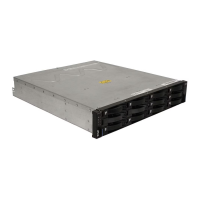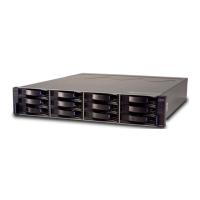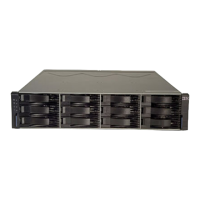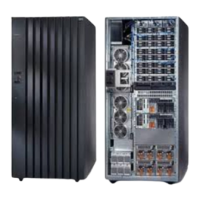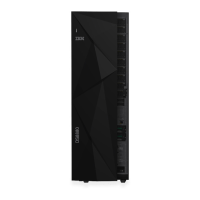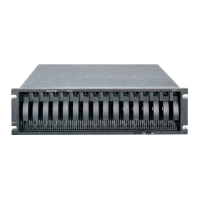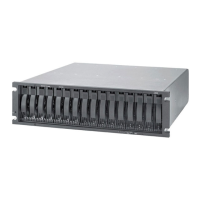7914DS3KPlanning_090710.fm Draft Document for Review March 28, 2011 12:24 pm
50 IBM System Storage DS3500: Introduction and Implementation Guide
these drives can push very high throughput numbers with large host IO blocksizes and
sequential workloads.
3.3.2 Understanding RAID types
In this section we introduce arrays, logical drives and associated terminology, and then
describe the various RAID levels that are supported by the IBM System Storage DS3500
storage subsystem. RAID is an acronym for Redundant Array of Independent Disks, and is a
storage solution in which part of the total storage capacity is used to store redundant
information about user data stored on the remainder of the storage capacity.
RAID relies on a series of configurations, called levels, to determine how user data and
redundancy data are written to and retrieved from the drives. RAID Level 1, RAID Level 10,
RAID Level 3, RAID Level 5, and RAID Level 6 write redundancy data to the drive media for
fault tolerance. The redundancy data might be an exact copy of the data (mirrored) or an error
correcting code derived from the data. If a drive fails, you can use the redundancy data to
quickly reconstruct information on a replacement drive.
DS3500 arrays and RAID levels
An array is a set of drives that the system logically groups together to provide one or more
logical drives to an application host or cluster. The DS3500 storage subsystem supports
RAID levels 0, 1, 10, 3, 5 and 6. Each of these RAID levels offers a different compromise
among capacity, performance and data redundancy. The attributes of each of these RAID
levels is described in more detail over the following pages of this book.
Note that the maximum number of physical drives in a RAID 0, 1 or 10 array is limited by the
maximum number of physical drives that can be installed in a fully populated DS3500 storage
subsystem, which is 96 drives. The maximum number of physical drives in a RAID 3, 5 or 6
array is always 30 drives.
The DS3500 storage subsystem is able to dynamically change the RAID level without
requiring downtime. This feature is called Dynamic RAID Migration (DRM).
Each RAID array contains one or more associated logical drives. A logical drive is the basic
structure that you create to store data on the storage subsystem. Each logical drives appears
as a separate physical drive to the operating system on the host server. The DS3500 storage
subsystem supports a maximum of 256 logical drives for the entire storage subsystem.
We now briefly describe the main features of each of the various RAID levels that are
supported by the DS3500 storage subsystem.
RAID 0: Data striping
RAID 0 (Figure 3-14 on page 51) is also known as data striping. In this RAID level, the data is
striped sequentially across all participating physical drives. RAID Level 0 is only designed to
increase performance and has no data redundancy. The DS3500 storage subsystem
supports a minimum of one drive and a maximum of 96 drives in a RAID 0 array.
RAID 0 is well-suited for applications that require fast access to non-critical data, or data that
can be easily restored from backup. Increasing the number of disk drives in the array will
increase the data access performance of the array.

